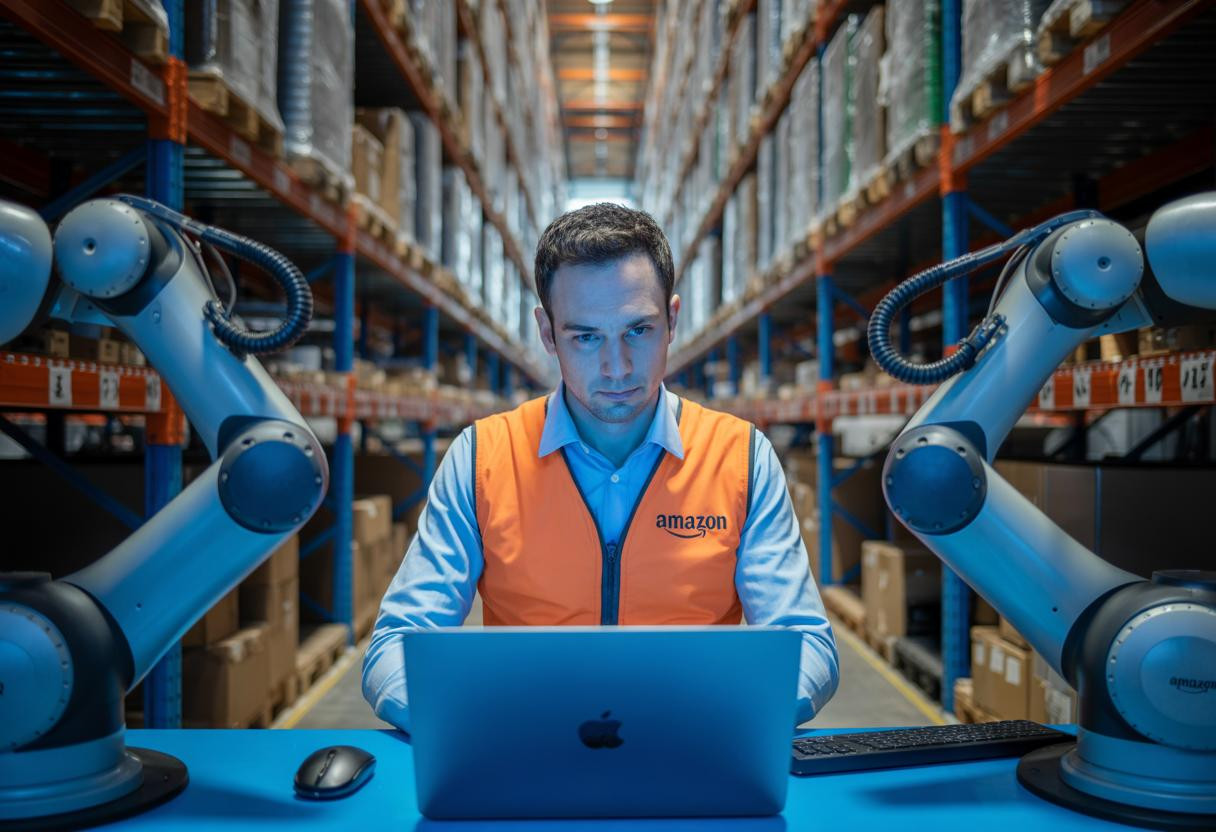Amazon software engineers are reporting that their jobs have transformed into something resembling warehouse work, with AI tools creating unprecedented pressure to produce code at breakneck speed. This shift represents a fundamental change in how one of the world’s largest tech companies approaches software development, with 89% of engineers now using AI daily and productivity expectations rising dramatically across all teams.
The warehouse-style transformation reshaping Amazon’s engineering culture
The comparison to warehouse work isn’t hyperbolic—it’s rooted in measurable changes to daily engineering practices. Amazon has raised productivity goals significantly over the past year, expecting teams to maintain the same code output despite reduced team sizes and faster delivery timelines. Engineers describe feeling like “bystanders in their own jobs,” spending more time reviewing AI-generated code than crafting original solutions.
This transformation mirrors how simple solutions often outperform complex technological innovations, except in reverse—complex AI systems are replacing traditionally creative work with more routine, assembly-line processes.
The financial impact is staggering: Amazon reported saving 4,500 developer years of effort and over $260 million through AI integration, but at what cost to professional satisfaction and skill development?
How AI tools are fundamentally changing daily engineering work
The productivity paradox creating new workplace stress
Engineers are experiencing a 40% reduction in time spent writing original code, with AI handling most boilerplate tasks. However, this efficiency gain comes with increased pressure to process and validate AI outputs at unprecedented speeds. The result feels mechanized rather than creative.
Many developers report anxiety about skill relevance, with 42% expressing concerns about their architectural design capabilities in recent internal surveys. This psychological impact reflects broader patterns seen in how social media anxiety parallels workplace transformation challenges during periods of rapid technological change.
The emergence of code review as primary work function
Traditional coding roles have evolved into quality assurance positions, with engineers spending 55% of their time reviewing AI-generated code rather than creating it. This shift has created a bottleneck effect, where human creativity becomes secondary to processing machine output efficiently.
The 55% code acceptance rate means nearly half of AI suggestions require human intervention, creating a repetitive cycle of review, reject, and regenerate that many engineers find mentally exhausting.
The hidden costs of AI-driven development efficiency
While Amazon touts impressive productivity metrics, the human element reveals concerning trends. Engineers report feeling disconnected from the creative problem-solving that originally drew them to software development. The 23% increase in creative experimentation time is offset by reduced autonomy in daily tasks.
Industry experts worry about long-term implications for innovation. When engineers become primarily validators rather than creators, the risk of optimizing for perceived superiority in complex systems while losing essential diversity in problem-solving approaches becomes significant.
Practical strategies for engineers navigating this transformation
Developing AI collaboration skills without losing creativity
Engineers who thrive in this environment focus on prompt engineering and context management rather than fighting the changes. They treat AI as a sophisticated tool requiring skillful operation, similar to learning any new technology platform.
Successful adaptation involves dedicating time to understanding AI model limitations and strengths, allowing for more strategic use rather than passive acceptance of outputs.
Preserving technical depth through intentional practice
Leading engineers maintain coding proficiency through personal projects and “AI-free” design sprints. Amazon has implemented bi-weekly creative exercises that require human-only problem solving, recognizing the importance of preserving core technical skills.
What this means for the future of software engineering
Amazon’s transformation signals a broader industry shift that other tech companies are watching closely. The key insight isn’t whether AI will change software engineering—it already has—but how organizations can harness efficiency gains while preserving the creative problem-solving that drives innovation. The engineers who adapt by becoming AI collaborators rather than AI replacements will likely define the next generation of software development.
